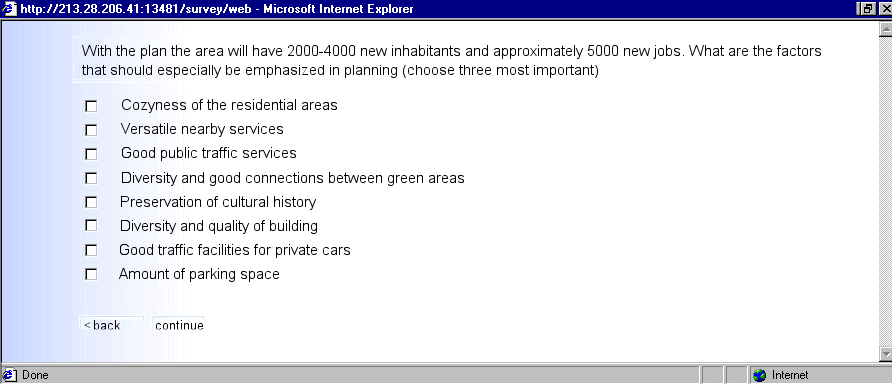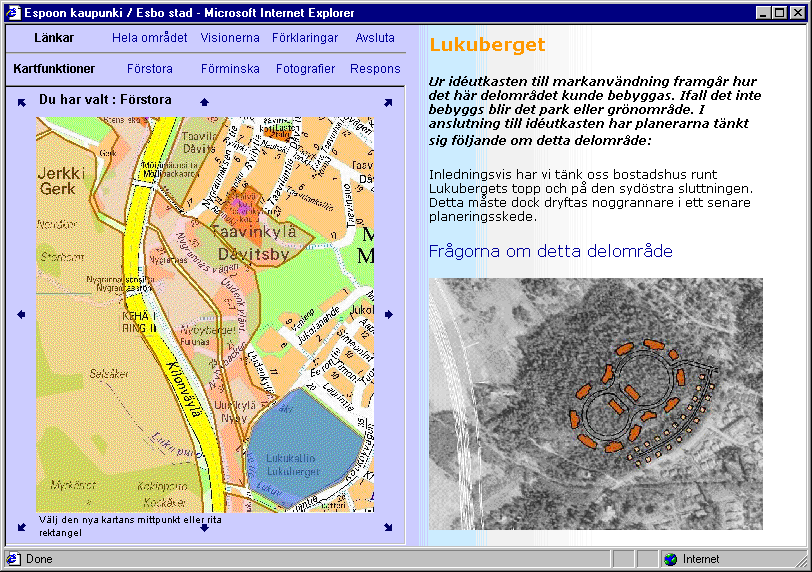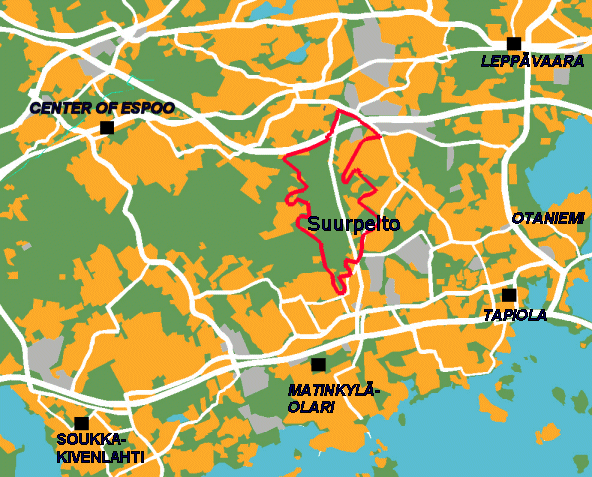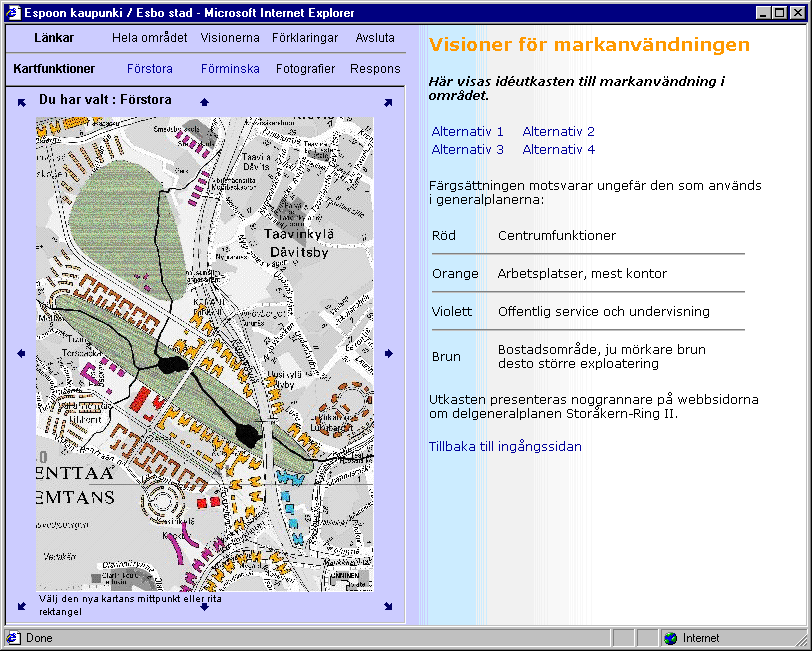Soil and Water Ltd has developed tools and methods for an internet-based feedback system to support citizen participation in land use planning. The objective is to provide the citizens proper but easy-to-use tools for giving feedback, enable focusing the comments to a certain location and to provide the planners good tools for analyzing the feedback. We see several benefits in this kind of a system. It provides the citizens a new channel for getting up-to-date information about planning (objectives and situation) and entering their opinions and comments. It will not replace the face-to-face meetings but it will complement them by giving a chance to get acquainted with the material before the meeting and enabling commenting afterwards. The citizens can take their time and give the feedback whenever convenient. We also expect this to increase participation of the youth.
The system consists of an Internet Map Server and a form based feedback system. Internet Map Server is used for presenting the planning area and preliminary visions of land use. The material (planning area, sub-areas, preliminary visions) is presented as intelligent vector data on top of a background map. The background map is scale dependent: in small scale we have used base maps or guide maps and in large-scale municipal base maps or orthophotos. We have attached digital photos and text documents either to objects or separate hot link points. They can give a lot of additional information about the characteristics of the area. In the case of a local master plan for the Suurpelto area in Espoo, the planning area was divided into twelve sub areas. Main characteristics of each sub area were described by an HTML document including both text and images.
Picture 1: Text and image information attached to the highlighted sub area of Lukuberget includes description of the sub area, aerial photograph and a sketch of preliminary land use vision. (Guide map and aerial photo are provided by city of Espoo)
The form based feedback system is used for presenting questionnaires and collecting data and feedback from the citizens. Soil and Water Ltd works in close cooperation with Codeonline Ltd who is specialized in wireless solutions and feedback systems. Codeonline Ltd has developed a software package called SurveyCode whose main use has been in market survey and analysis. The system includes SurveyEditor for easy design of the questionnaire forms. The questionnaires are uploaded on the server where they can be distributed on various platforms: in addition to HTML web pages the questionnaires can be run on several mobile phone platforms (WAP, HDML, i-Mode). The answers are stored in a database on the server. Every time a new answer is received the system runs analysis of the database. For “select best alternative”, “select all that apply” and “enter a number” type of questions the system maintains statistics and charts that describe distribution of the answers. For free text comments the only statistics that is produced in the number of replies.

Picture 2: Example of a generic question concerning planning of the area
The feedback system is used in two ways. It is used for collecting general information about the concerned citizen: his contact information (if he wishes to enter it), his background and opinions concerning land use planning, and his expectations concerning the particular case of planning that he is commenting. Those who leave their contact information will be sent (if they wish) information of the planning during the whole planning process. The system is also used in collecting comments that concern a particular sub-area or geographic object indicated on the map. In case of indicated areas each area will have a specific questionnaire and the answers are stored in a separate table of that particular area.
The obvious benefits for planners are that:
feedback is received in digital form
having the data in a table supports classification, management and analysis of the data using e.g. MS Excel or a statistical software package
on-line analysis provides the planners interesting information already before the final results
geocoding the contact information gives the planners an idea of where the most concerned citizens live. In Finland exact street address geocoding would not be applied for respect of privacy reasons – not even for internal purposes. The geocoding would always be aggregated to some subdivision of the planning area.


